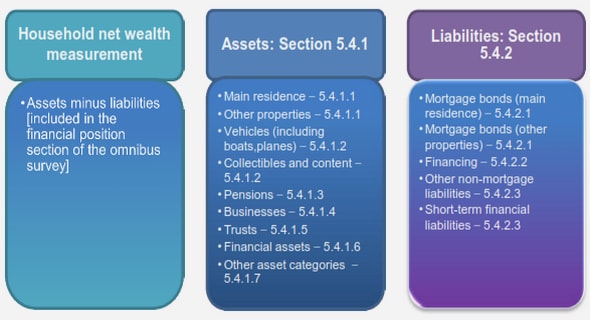Get Complete Project Material File(s) Now! »
Two way Satellite Time and Frequency transfer (TWSTFT)
One of the most precise and accurate techniques for comparison of frequency stan-dards located at remote sites is the Two way Satellite Time and Frequency trans-fer [16, 17]. This is an implementation of the principle described above with signal transmission as follows [11]:
1. The metrology signal is carried at high frequencies in free space. The method utilizes a modem to generate a pseudo random code synchronized to the local clock and this code is used to modulate a microwave signal of about 14 GHz. This modulated signal is transmitted to a geostationary telecommunication satellite from the Earth station and is referred to as the uplink.
2. The satellite re-transmits this modulation on a downlink at a frequency of 12 GHz which is received at the remote site. The signal is demodulated by a modem and the received pseudo random code is cross correlated with the locally gen-erated pseudo random code.
The scheme for TWSTFT is illustrated in Fig. 1.7 [18]. At Clock A station, a time interval counter measures the time difference (TA) between the Clock A (CA) signal and the received signal from Clock B (delayed by the propagation and instrumental delays). Similarly, at the Clock B station, a time interval counter measures the time difference (TB) between the Clock B (CB) signal and the received signal from Clock A. The time difference between the clock stations ( DT ) is given by the following equation [18]:
where d depicts the different delays associated with the time transfer as illustrated in Fig. 1.7. The second the third terms present the difference in the transmission and reception delays of each of the clock stations respectively, the fourth and fifth terms present the difference in the uplink/downlink propagation delays for clock stations A and B respectively; these terms almost cancel out with the assumption that the signals traverse symmetric paths. The sixth term is the difference in delay due to the satellite. The last term is due to Sagnac effect [8, 9]. It arises due to the effect of Earth’s rotation, A is the area defined by the equatorial plane by the line segments connecting the satellite and the center of the Earth to the two clock stations. These terms are computed from the positions of the ground stations and the geostationary.
This method provides high accuracy due to the high frequency signals used for transmission and the nearly symmetric path delays. The high operational cost of this method is a disadvantage.
Time and frequency transfer over Optical fiber links
Over the last fifteen years, optical fiber links have been intensively studied for fre-quency dissemination. They have demonstrated frequency transfer with uncertain-ties below 10 19 over several hundred km [19, 20]. It allows comparison of optical signals with accuracy and stability down to 10 20 level, comparison of remote clocks with unprecedented uncertainty [21, 22] opening doors to new stringent tests of fun-damental physics and relativity [23] and chronometric geodesy [24]. In the RF and time domain, the link from AOS to GUM in Poland is running almost continuously from 2013 with state of the art time uncertainty [25]. Applications to VLBI were ex-plored in the RF and optical domain [26, 27, 28, 29, 30].
Time transfer was by comparison less intensively studied. A seminal experi-ment was carried out by imprinting a modulation on the optical carrier as in [31, 32] and an absolute time accuracy of 250 ps and long-term timing stability of 20 ps was achieved for a 540 km public telecommunication optical fiber network [31]. Another significant time transfer experiment was carried out by transferring a femto-second laser over a 159 km installed fiber network [33]. They achieved a time deviation of 300 fs at 5 s and an accuracy at the 100 ps level.
One of the most mature technique is the active stabilization of the propaga-tion delay for joint time and frequency transfer, also referred as the ELSTAB tech-nique [34, 35]. They extend and test this system up to 600 km long fibers installed in an urban Polish telecommunication network [36]. They demonstrate a time stability below 1 ps for averaging time up to 103 seconds which increases to about 3 ps for longer averaging times and a time calibration with accuracy well below 50 ps [36].
Two configurations are possible for optical fiber links. The first is a bi-directional setup which utilizes single fiber for propagation of forward and backward signals. The second configuration is a uni-directional setup which utilizes two separate fibers for propagation of forward and backward signals. Such high performance exper-iments utilize fully bi-directional architecture (same wavelength, same frequency, same fiber) and fit to point-to-point network architecture or point-to-a few network architecture.
Time over Internet
At the other extreme of fiber based synchronization solutions, there are also packet-based protocols over Ethernet and Internet, including their optical fiber implemen-tations.
Network Time Protocol (NTP)
NTP was developed by David Mills [37] and is the most widely utilized Internet protocol. It uses only the highest OSI layer [38] of telecommunication, which is the software layer. NTP is a client-server service. There is no modification at all of the telecommunication backbone and it only requires software installation at the end user. Any computer with commonly used operating system can run NTP daemon and synchronize its clock to the time reference. It works on a wide area network (WAN). The use of NTP is for free. For these reasons, it is extremely popular. But this service may not be traceable and accurate, as the propagation delay is not con-stant and is not precisely known, and depends on the data traffic.
NTP is a two way technique based on packet exchange process between the Client (local time) and the Server (reference time). Fig. 1.8 displays the NTP packet exchange process. The Client initiates the message exchange process by sending a packet including the value of time t1, which is the time at which the message was sent. This message is received by the Server at a time t2 in its timescale. Then this process is reversed, the Server sends a packet timestamped with t3 along with the t1, t2 values, which is received at time t4 by the Client. The Client thus has the knowl-edge of the timestamps needed to evaluate the time offset between the Client and Server timescales.
The initial White Rabbit experiment by the CERN team was a short range syn-chronization between a WR Master and three WR Slaves in a daisy chain configura-tion [42]. Each Slave was synchronized by a 5 km fiber spool to the previous stage. The accuracy and precision of the synchronization between the Master and each of the Slave is displayed in Fig. 1.9. The histogram depicts the master to slave offset below 1 ns for each of the Slaves. The accuracy is within 200 ps and standard deviation for each of the Slaves is in the order of 6 ps.
Such impressive results led metrology laboratories to consider White Rabbit PTP for precise time and frequency dissemination. It was initially developed for synchro-nization of thousands of nodes up to 10 km range. Two seminal experiments were carried out to show that the technique is extentable to long distances over a telecom-munication network. The first experiment by the Finnish metrology laboratory VTT, is a dual fiber 950 km link between Espoo and Kajaani in Finland, where WR is car-ried over an active Dense Wavelength Division Multiplexing (DWDM) network of Finnish University and Research network FUNET (uni-directional, including chro-matic dispersion compensation spools). They demonstrated time stability as low as 20 ps at 1000 seconds of integration time [43]. They utilized an external method of GPS calibration and reported that the WR transfer agrees with GPS PPP measure-ments within 2 ns.
The second time transfer experiment was performed on active telecommunica-tion networks almost at the same time as the Finnish experiment. It is a 2×137 km link between VSL and Nikhef, The Netherlands. WR is carried by SURFnet on their active telecommunication network on a Coarse Wavelength Division Multiplexing band. They achieved a time stability of 10 ps at 1000 seconds of integration time [43]. They reported an accuracy budget of 8 ns. With such results, White Rabbit PTP appears to be a very promising technology for long haul time and frequency dissemination. The reader can find more details on WR-PTP in the next Chapter.
Interested readers can find more information in the last review paper [19], recent work at the working group for advanced time and frequency transfer methods at BIPM [44], and the list of projects using or developing White Rabbit on the CERN web page [45, 46]. I simply conclude this section by stating that several studies are nowadays being undertaken all over the world, especially in Europe and Asia. Time and frequency transfer over optical fiber links has emerged as an excellent alterna-tive to GNSS based methods for large scale time dissemination.
Performance comparison of some time transfer methods
In this section we categorize the described time transfer methods according to their performances. The three categories are displayed in Fig. 1.10. The first category is the very high performance time transfer by optical fiber links providing accuracy in the range of hundreds of picoseconds to a few nanoseconds covering national or continental scale. The second category includes the two way satellite time and frequency transfer and the GNSS common view method. This category provides accuracy in the range of few ns and covers long distances (1000 km) with GNSS covering the Global scale. The last category in the performance comparison is the time over Internet providing synchronization accuracy in milliseconds for NTP, in microseconds for PTP and in nanoseconds range for White Rabbit PTP.
Table of contents :
1 Introduction
1.1 Time and frequency metrology
1.1.1 Accuracy
1.1.2 Stability
1.2 The Oscillator signal
1.3 Noise analysis
1.3.1 Frequency domain
1.3.2 Time domain
1.3.2.1 Allan Variance
1.3.2.2 Overlapping Allan Variance
1.3.2.3 Modified Allan Variance
1.3.2.4 Time Variance
1.4 Clocks and timescales
1.5 Introduction to time transfer methods
1.5.1 One way time transfer method
1.5.1.1 GNSS time dissemination
1.5.1.2 GNSS time transfer methods
1.5.2 Two way time transfer method
1.5.3 Two way Satellite Time and Frequency transfer (TWSTFT)
1.5.4 Time and frequency transfer over Optical fiber links
1.5.5 Time over Internet
1.5.5.1 Network Time Protocol (NTP)
1.5.5.2 Precision Time Protocol
1.5.5.3 SONET and SDH
1.5.5.4 White Rabbit PTP (WR-PTP)
1.5.6 Performance comparison of some time transfer methods
1.6 Implemented and Potential applications of White Rabbit
1.6.1 For Scientific experiments
1.6.2 Calibration in the RF domain
1.6.3 Smart power grids
1.6.4 5G mobile networks
1.6.5 Financial transactions and timestamping
1.7 Outline of the thesis
2 Introduction to White Rabbit Precision Time Protocol (WR-PTP)
2.1 Introduction to WR project
2.2 Introduction to WR-PTP
2.2.1 Precision time Protocol (PTP)
2.2.2 Synchronous Ethernet
2.2.3 Digital Dual Mixer time difference (DDMTD) phase detector
2.3 A typical White Rabbit Network
2.4 Synchronization in White Rabbit
2.4.1 Syntonization
2.4.2 Link Delay measurement
2.4.3 Link asymmetry evaluation
2.4.4 Clock offset evaluation
2.5 Unification of White Rabbit into PTP
2.6 Components of a White Rabbit Network
2.7 White Rabbit equipment
2.7.1 The White Rabbit Switch
2.7.2 The White Rabbit Nodes
2.8 Optical emitters
2.9 The transmission medium – Optical fibers
2.10 White Rabbit clocking Scheme
2.11 The potential performance limitations
2.12 Outlook
3 Improving the White Rabbit Switch performance
3.1 Introduction
3.2 The White Rabbit Switch in Grandmaster mode
3.2.1 Experimental setup
3.2.2 Phase noise power spectral density
3.3 Improving the Grandmaster WRS performance
3.3.1 Phase noise Power Spectral Density and Allan Deviation
3.3.2 Time Stability performance
3.4 Performance of a Slave White Rabbit Switch
3.4.1 Testing Optical link configurations
3.4.2 Experimental setup
3.4.3 Effect of Chromatic dispersion
3.4.4 Results
3.5 Improving the performance of a Slave WRS
3.5.1 Phase Locked Loops (PLL)
3.5.2 Experimental Setup
3.5.3 Phase locked loop Bandwidth variation
3.5.4 A mid range White Rabbit link
3.5.5 Phase locked loop bandwidth optimization
3.5.6 Frequency and Time stability performance
3.6 The Local Oscillator performance
3.7 Increasing the PTP message exchange rate
3.8 Summary
4 Towards long range time and frequency dissemination using White Rabbit
4.1 Introduction
4.2 A realistic Telecommunication network span
4.2.1 Experimental Setup
4.2.2 Phase locked loop Bandwidth optimization
4.2.3 Experimental results
4.2.4 Fiber thermal noise
4.2.5 Limitations for the time stability performance
4.3 Effect of Chromatic Dispersion
4.4 Tackling Chromatic Dispersion
4.5 Cascaded White Rabbit links using DWDM technique
4.5.1 Experimental Setup
4.5.2 Phase locked loop Bandwidth optimization for cascaded stages
4.5.3 Frequency and time stability performance
4.5.4 Extension to a Cascaded 400 km White Rabbit link
4.5.4.1 Phase locked loop bandwidth optimization
4.5.4.2 Frequency stability performance
4.5.4.3 Time stability performance
4.6 A long haul telecommunication span White Rabbit link
4.6.1 Experimental setup
4.6.2 Frequency stability performance
4.6.3 Time stability performance
4.6.4 Effect of reduced PTP rate
4.6.5 Effect of reduced Bandwidth of locking
4.7 A multi user 4×125 km White Rabbit link
4.7.1 Experimental Setup
4.7.2 Frequency and time stability performance
4.8 Conclusion
5 Deployments
5.1 Introduction
5.2 A short range in-campus dissemination network
5.3 A mid range suburban WR link using dark fiber network
6 Time Accuracy
6.1 Introduction
6.2 Calibration of fiber spools using White Rabbit
6.2.1 Calibration: A sensitive task
6.2.2 Calibration by forcing asymmetry in a uni-directional link
6.3 Wavelength swapping technique
6.3.1 Implementation and Results
6.4 Fiber swapping technique
6.4.1 Implementation and Results
6.5 Dual wavelength technique
6.5.1 Implementation and Results
6.6 Summary
7 Conclusion
7.1 Summary
7.2 Perspectives


